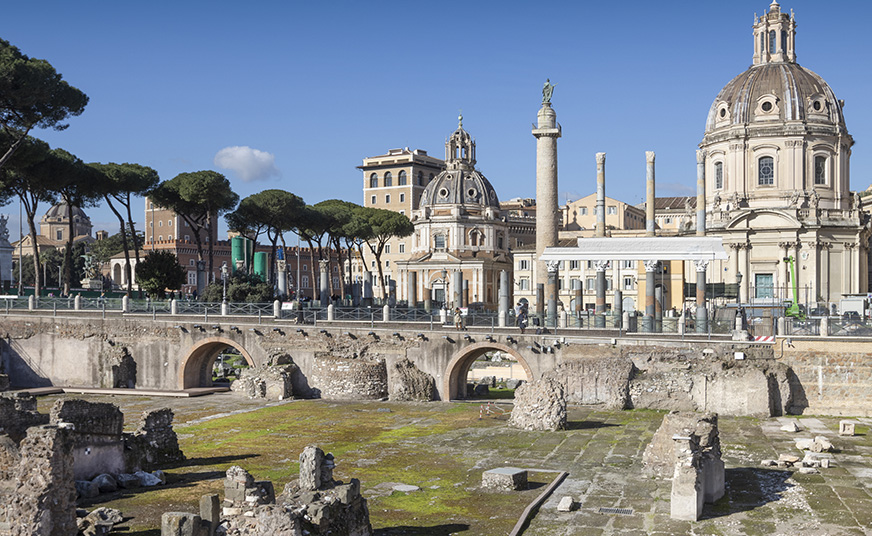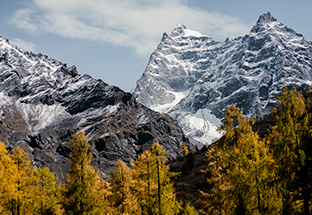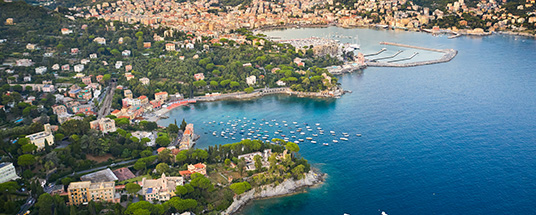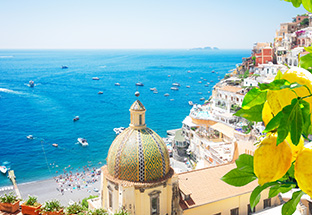Tailor-Made Italian Journeys: Your Adventure Awaits
We are a Tour Operator and Incoming Travel Agency specializing in bespoke travel solutions across Italy.
Our diverse travel experiences highlight the excellence of traditions, history, art, and landscapes, with a strong commitment to responsible tourism. Whether you’re looking for personalized itineraries or tailor-made tours, we craft journeys to meet your expectations.
Our team of expert tourism professionals is ready to guide you toward the best destinations, ensuring every trip is unforgettable. From the majestic peaks of the Aosta Valley to the enchanting Amalfi Coast, discover Italy’s wonders with us—your perfect journey starts here.
Destination
1 - Discover the Aosta Valley
Explore the Aosta Valley, discovering castles and valleys amidst the peaks of Italy's smallest region, staying in the historic centers of Aosta and Saint-Vincent, with guided tours, dinners, and tastings of local products. A journey through the clouds in the heart of the Alps, to experience the unique Skyway of Mont Blanc.
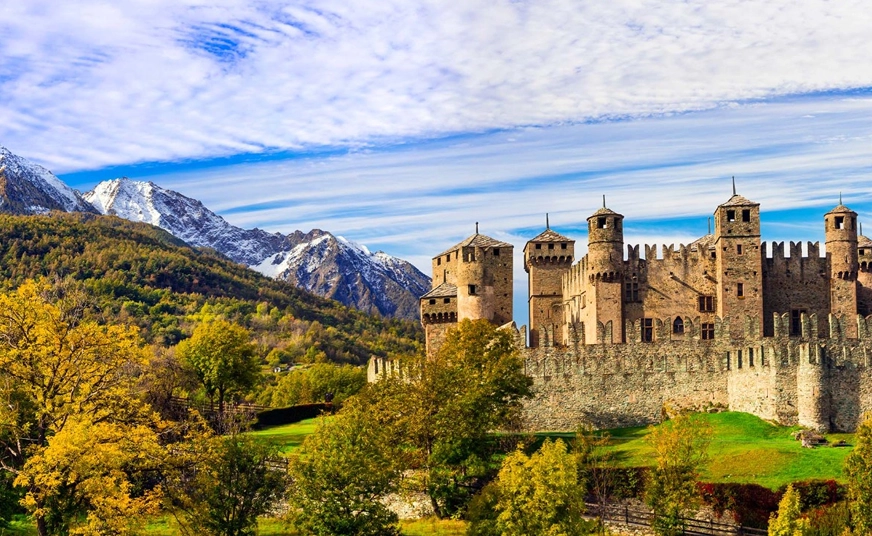
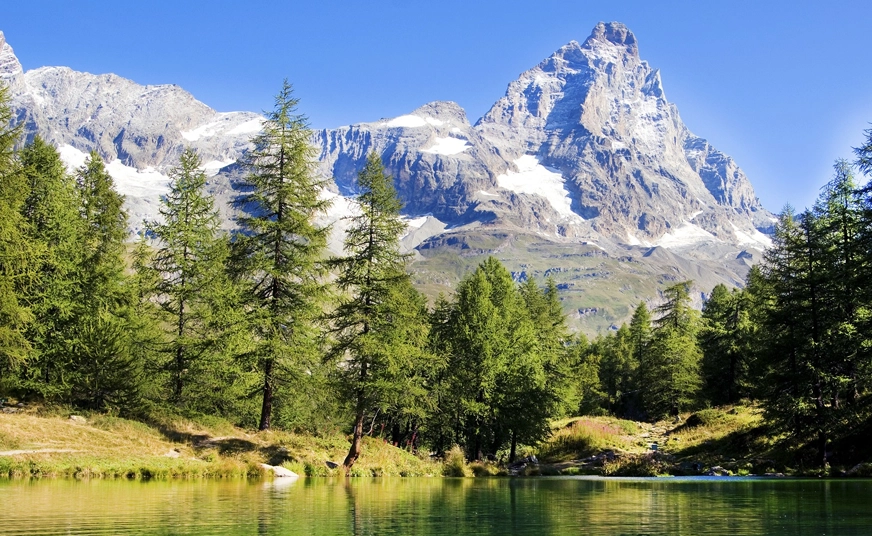
2 - Turin and the Valleys of Piedmont
In the northwestern corner of Italy, bordering France, lies the region of Piedmont. Piedmont is the land of kings, home to the royal Savoy family, and Turin, the capital of Italy for a period, is also where the Slow Food movement was born.
Turin and its valleys offer a unique combination of art, culture, sports, and excellent food. Turin, the capital of Piedmont, is a city of extraordinary elegance and refinement, characterized by wide tree-lined avenues, majestic squares, and endless porticoes.
Some of its most famous landmarks include: Mole Antonelliana and the Cinema Museum: A symbol of the city, it offers a panoramic view. Egyptian Museum: The second most important Egyptian museum in the world, after Cairo, a must-see for archaeology and history enthusiasts. Royal Palaces and Residences: Such as the Royal Palace and Palazzo Madama, testaments to the city's Savoy past. Valentino Park: A green oasis along the Po River, ideal for a walk or picnic, featuring the charming Medieval Village.The city is also famous for its cuisine, with historic restaurants and cafés serving specialties like gianduia, bicerin, and traditional dishes such as vitello tonnato or agnolotti del plin.
The valleys surrounding Turin are a true paradise for nature lovers, sports enthusiasts, and those seeking local traditions. Here are some of the most scenic: Val di Susa with Sestriere and Bardonecchia, famous for skiing and other snow activities. Lanzo Valley for hiking and trekking. Langhe and Roero (a short distance from Turin): Not exactly a valley but a UNESCO World Heritage hill area, famous for its vineyards and picturesque villages. Must-see experiences include tastings of Barolo and Barbaresco, and visiting the medieval castles of Grinzane Cavour and Barolo. The white truffle season in Alba is also a highlight.
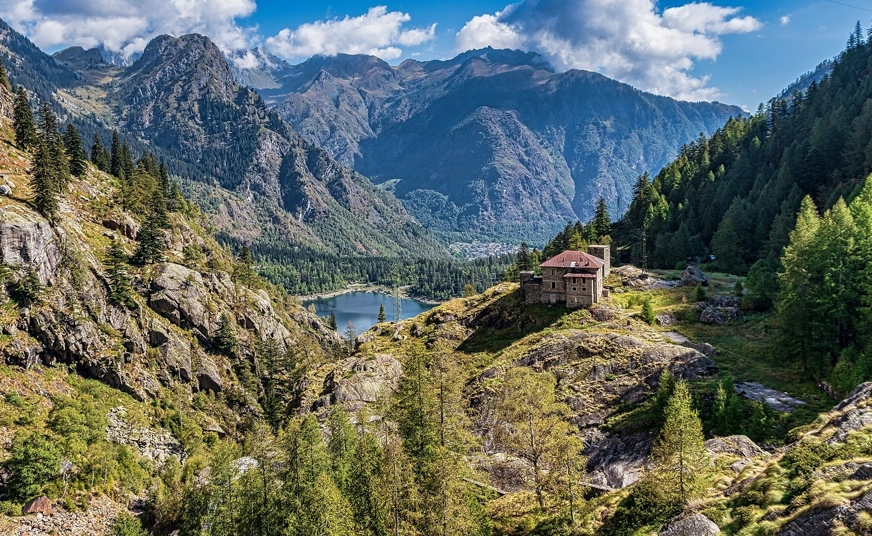
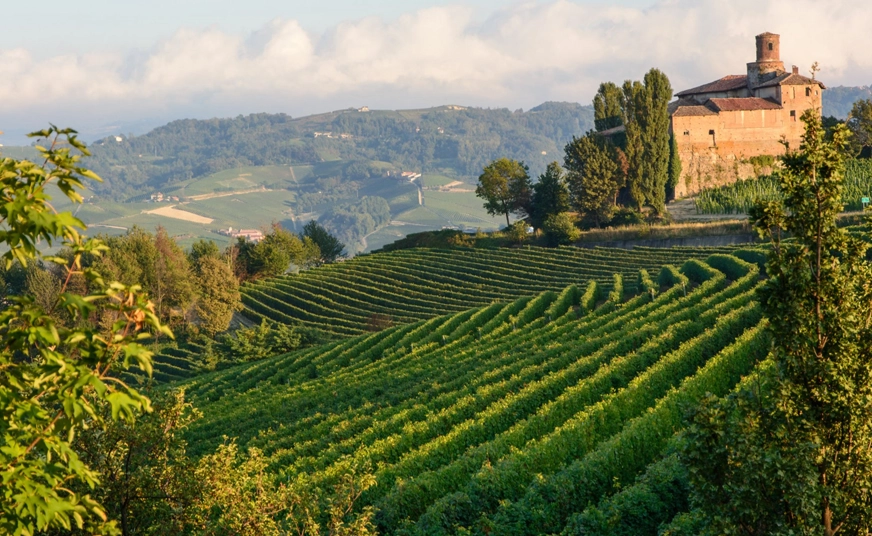
3 - Eastern and Western Liguria
This is a region dominated by both the sea and the mountains. Take advantage of both by hiking and boating wherever you can. While the views from the hiking trails are spectacular, it's just as impressive to see the Cinque Terre, Portofino, or Portovenere from the water.
Near the French border, you’ll reach the Riviera dei Fiori, a province dominated by greenhouses that cultivate all kinds of magnificent flora. Here, you’ll also find the coastal cities of San Remo (famous for its summer music festival) and Ventimiglia.
Genoa is a large port city with charming neighborhoods. Don’t miss the coastal towns of Santa Margherita, Lerici, Camogli, Nervi, and Recco.
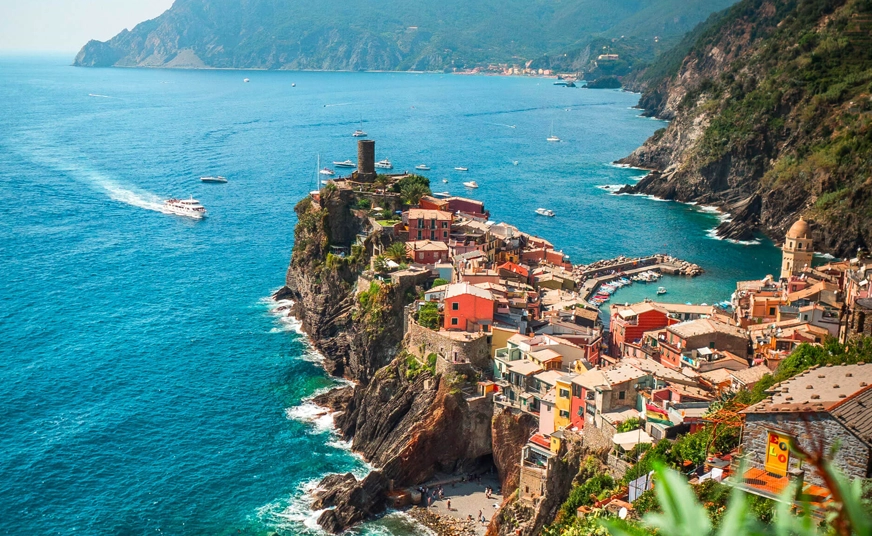
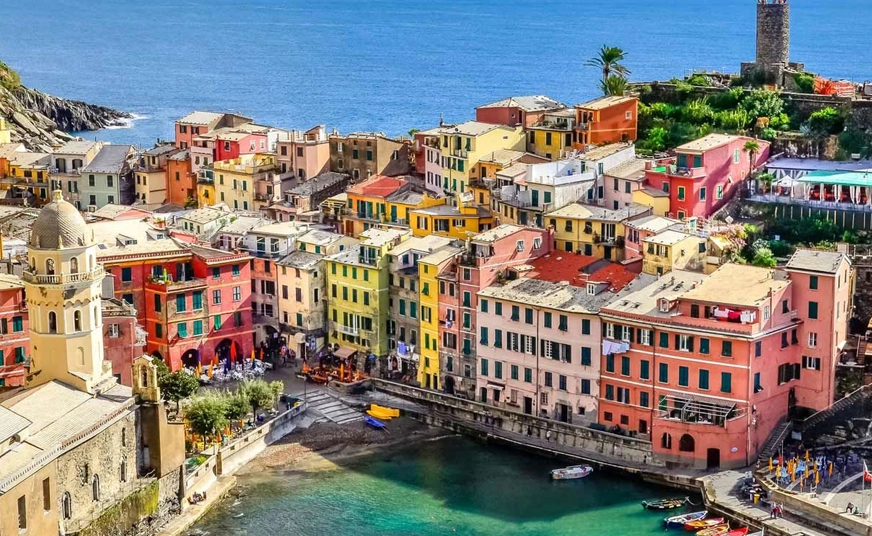
4 - The Great Lakes of Italy: Maggiore, Como, and Garda
Lake Maggiore is one of the most beautiful Italian lakes, and it has enchanted renowned national and international artists who have stayed here. Considered the largest of the pre-Alpine lakes, hence its name "Maggiore" (meaning "Greater"), it is of glacial origin, and its shores touch Lombardy, Piedmont, and Switzerland. Surrounded by hills and mountains that shield it from the cold northern winds, the lake boasts extraordinary natural beauty. Among its treasures are its 11 islands. Particularly captivating is the archipelago of the Borromean Islands, located between Stresa and Verbania, which includes Isola Madre, Isola Bella, and Isola dei Pescatori. Nature lovers will find Lake Maggiore an ideal destination for their holidays, thanks to its numerous botanical gardens, such as the one at Villa Taranto with more than a thousand plant species, the Alpinia Garden, the Camellia Park in Locarno, and the gardens scattered across the various islands.
Lake Como
Lake Como is famous worldwide for its charm, breathtaking views, and the majestic mountain
ridges that harmoniously reflect on its crystal-clear waters. It is one of the largest lakes
in Europe and has a peculiar upside-down "Y" shape with three branches: Colico to the north,
Lecco to the southeast, and Como to the southwest. The Alps shield the entire area from cold
winds, offering residents and countless visitors a pleasant and favorable climate
year-round.
Witness the sunrise over Lake Como and the Alps—an unforgettable experience. A boat trip to Bellagio, one of Italy's most beautiful villages, is highly recommended. Explore the city of Como at your own pace and stop for a lakeside lunch to complete your visit.
Lake Garda
Lake Garda, the largest lake in Italy, is one of the country's most enchanting and visited
tourist destinations. Located between the regions of Lombardy, Veneto, and Trentino-Alto
Adige, this lake offers an extraordinary variety of landscapes, attractions, and activities,
making it suitable for every type of traveler.
The lake is surrounded by a unique blend of mountains, hills, and beaches. Among the charming villages worth visiting are Sirmione, Malcesine, Riva del Garda, Desenzano del Garda, and Limone sul Garda. The lake's Mediterranean climate guarantees warm but breezy summers and mild winters, making it a perfect year-round destination.
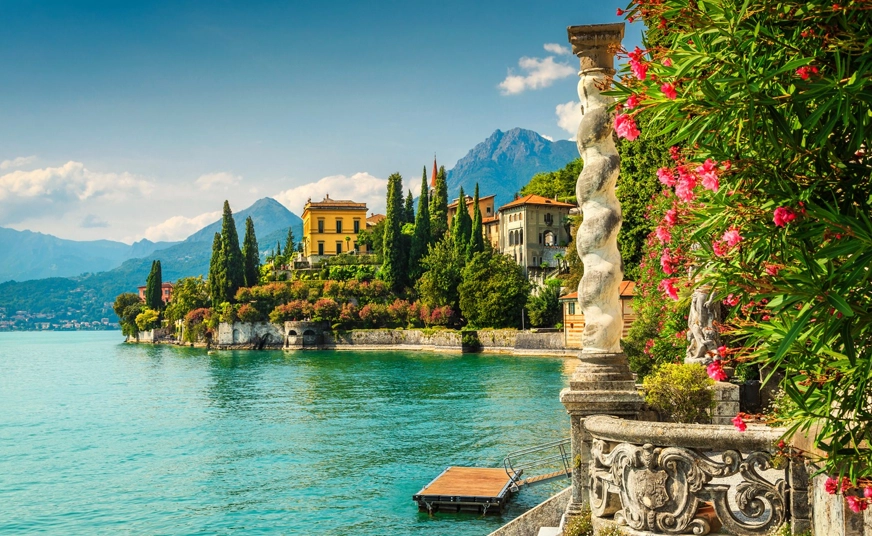
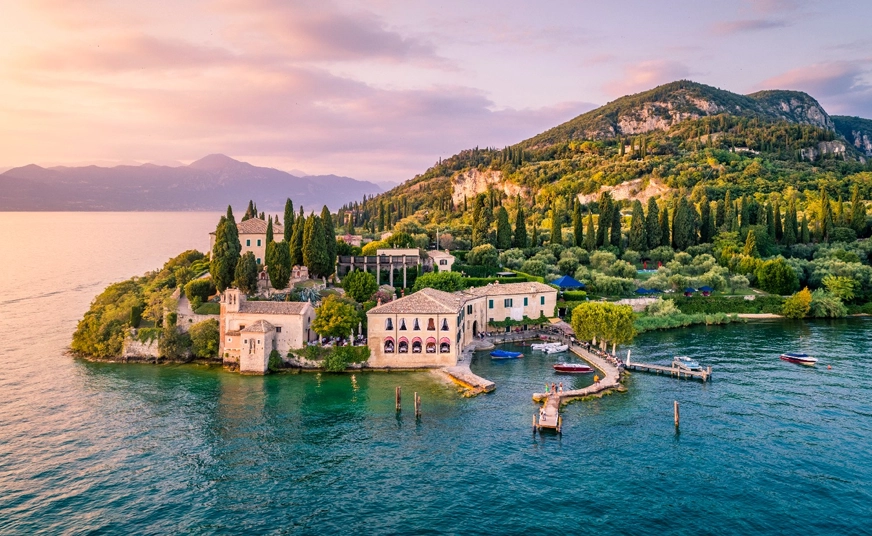
5 - Venice and its Lagoon
Considered one of the most beautiful cities in the world, Venice is a treasure trove of authentic artistic and architectural gems that are unique on the global stage. Elegant and romantic, Venice is a magnificent city where churches, palaces, ancient bridges, monuments, and squares tell the extraordinary and fascinating story of its past. It is one of those places that must be visited at least once in a lifetime.
The heart of the city is undoubtedly Piazza San Marco, the most elegant square in Europe, which is home to two iconic monuments: the famous Basilica di San Marco, adorned with splendid decorations and magnificent mosaics, and the Doge's Palace, a masterpiece of Venetian Gothic architecture.
Not far away, you will find the famous Bridge of Sighs, offering a magnificent view of the lagoon and a must-see stop for a romantic gondola ride traditionally along the Grand Canal. Another symbol of the city is the Rialto Bridge, a masterpiece by Antonio Da Ponte, which was the only bridge between the two shores of the Grand Canal until the 19th century. Also worth visiting is the baroque Basilica of Santa Maria della Salute, the Gallerie dell'Accademia, which houses over 800 paintings, and the Scuola Grande di San Rocco, with its extraordinary cycle of paintings by Tintoretto.
Venice is a city to be explored on foot, and its charm also lies in the hidden corners, the less known yet incredibly evocative places that are usually not found in tourist guides.
An essential stop for anyone visiting the city is the nearby island of Murano, whose name is closely linked to the art of glassmaking, an ancient tradition that is still alive today. The Glass Museum documents the artistic production from the Roman period to modern times. However, the jewel of Murano is the Basilica of Saints Maria and Donato, a splendid example of Romanesque-Byzantine architecture. Also worth a visit is Burano, the island of lace and artists, largely made up of brightly colored fishermen's houses.
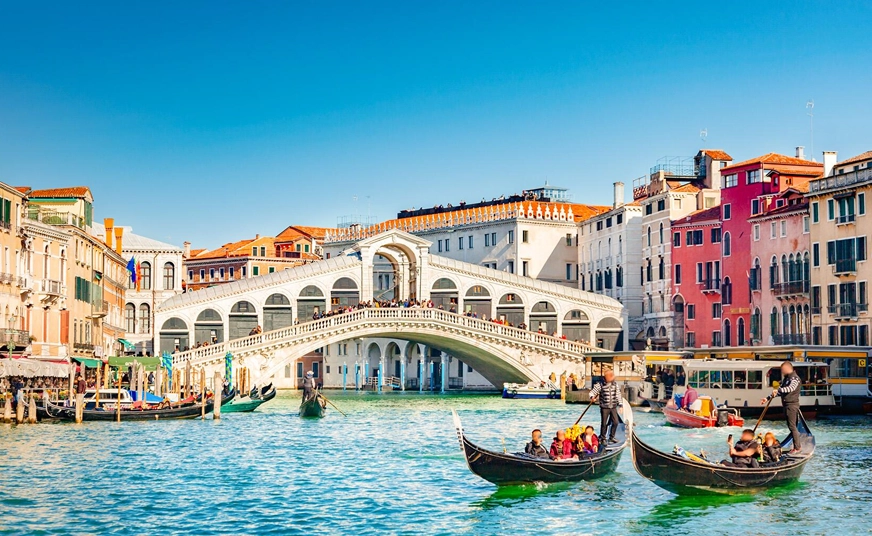
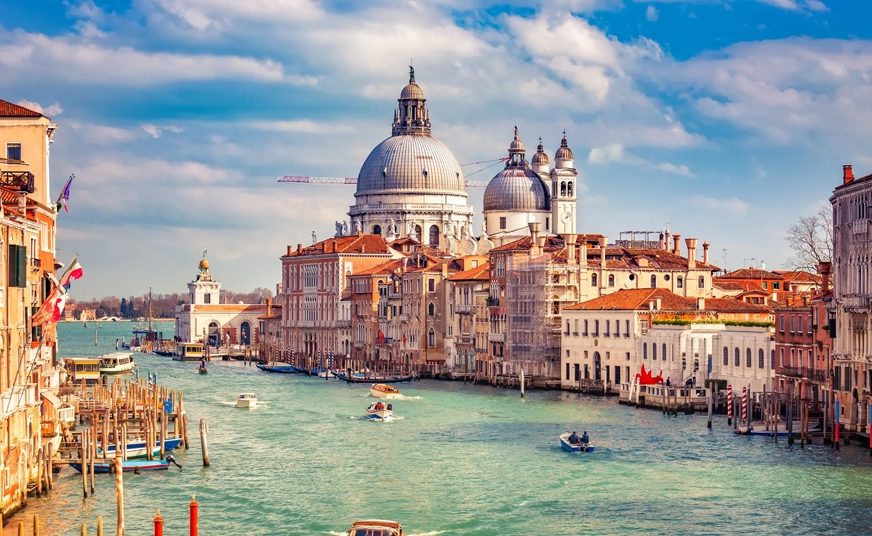
6 - Tuscany and Its Treasures
Many writers and filmmakers have captured the beauty and atmosphere of Tuscany. Painters have depicted the gentle hills covered with vineyards and olive groves, while photographers have tried to immortalize the enchantment of the Tuscan landscapes, always different but always unique. Chianti, Val d'Orcia, Maremma, and Garfagnana evoke unspoiled territories rich in charm and atmosphere.
Tuscany is much more than static representations: it is life, folklore, art, and culture. Our guests can choose whether to join us in discovering the cities of art, culinary excellence, or the beauty of the landscape, perhaps riding a bicycle or a Vespa.
Florence, the cradle of art and the city of the Renaissance; Siena, where art, history, and folklore reach their peak in the spectacle of the Palio, the horse race of the districts, held annually in the main square surrounded by beautiful historic buildings; Lucca, whose medieval urban layout has remained intact over the centuries thanks to its impressive Renaissance walls, still surrounding the historic center; Pisa, whose Leaning Tower was long considered one of the Seven Wonders of the World; Arezzo, the city of Piero della Francesca's frescoes, are some of the most famous cities. But even the small villages, such as San Gimignano, Volterra, Pienza, Montalcino, Montepulciano, to name just a few, have become a must-see for visitors who truly want to say they have visited and experienced Tuscany.
Time stands still in the face of such beauty.

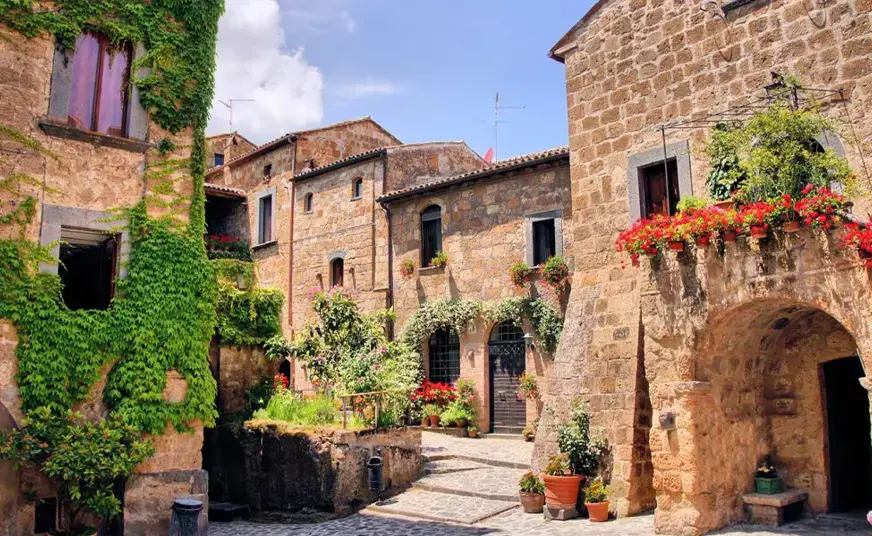
7 - Assisi and the green Umbria
Among the jewels of the region, Assisi stands out, the birthplace of St. Francis, patron saint of Italy, and St. Clare. In the province of Terni, Orvieto rises, renowned for its spectacular cathedral, its palaces, medieval alleys, and the legendary Well of St. Patrick. Perched on the slopes of the mountains are other magnificent “nativity scene” villages, such as Bevagna and Spello. Another beautiful medieval town in Umbria is Gubbio, a picturesque village also connected to the life of St. Francis.
Untouched landscapes, immersed in the greenery of rolling valleys, and ancient villages make Umbria an enchanting region. A land of hills, mountains, and valleys, it lies in the heart of Italy and stretches across the middle basin of the Tiber River. Umbria is also home to Lake Trasimeno, the largest lake in central Italy, whose territory still preserves remains of Etruscan settlements, particularly in the area of Castiglione del Lago.
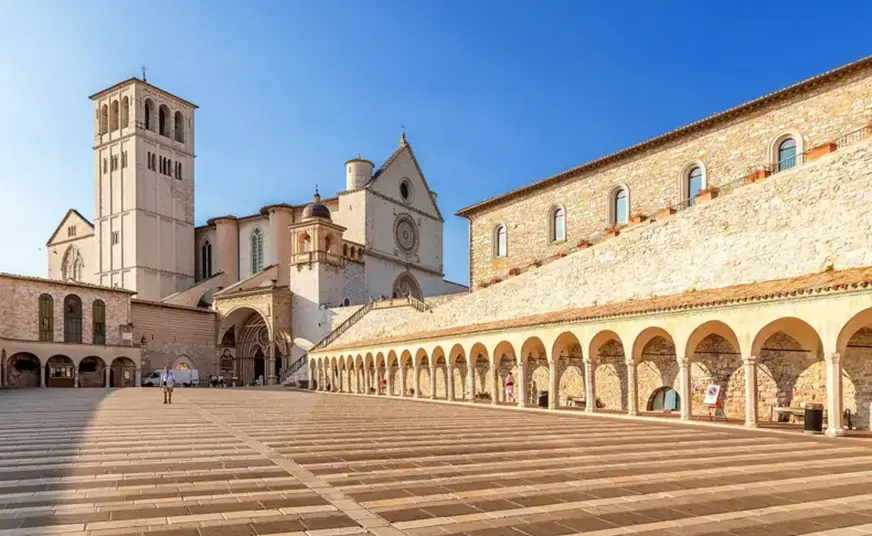
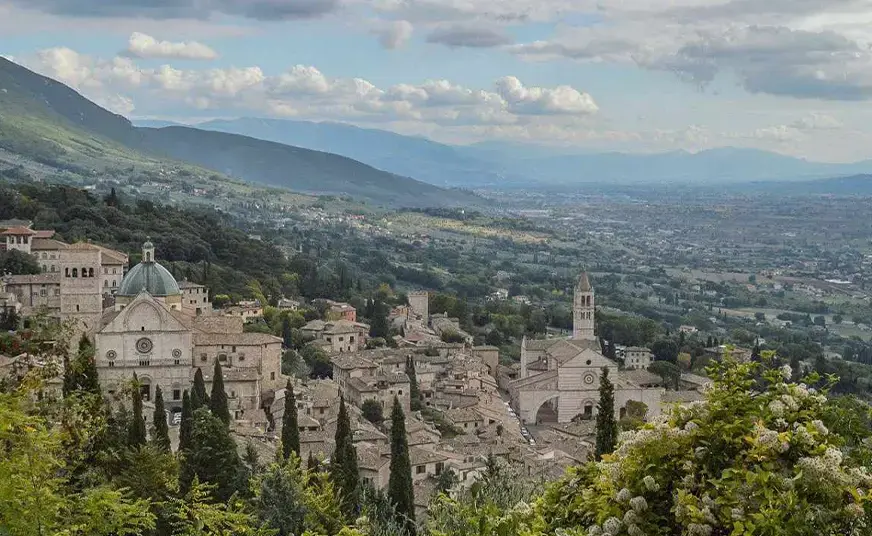
8 - Rome and the Castelli Romani
Considered one of the most beautiful cities in the world, Rome is an open-air museum where every corner, church, and square hides secrets and stories waiting to be discovered.
Rich in history and culture, Rome is a stunning city that attracts millions of tourists from all over the world every day. The beauty the city holds is countless, offering something for everyone: fascinating monuments, magnificent palaces, opulent noble villas, extraordinary archaeological sites, charming squares, places of worship, and museums filled with artistic treasures.
You can’t say you’ve visited Rome without seeing the Colosseum, one of the most famous monuments in the world. Even without knowing its history and architecture, everyone is captivated by this marvelous construction, which has always been a symbol of Rome’s long history. Not far from the Colosseum, you'll find other historic monuments such as the Imperial Fora, the Baths of Caracalla, and the Circus Maximus.
Another famous Roman monument is the Pantheon, a striking building from ancient Rome built by Emperor Hadrian between 118 and 125 A.D., whose architectural history remains mysterious and uncertain even after two thousand years. In 1870, it became the burial place of the kings of Italy. One of Rome's symbols that is absolutely not to be missed is the dramatic Trevi Fountain, one of the most famous fountains in the world. This extraordinary work of art was started in 1732 by Nicola Salvi and completed in 1762 by Giuseppe Pannini.
There are many squares in Rome, which contribute greatly to the unique atmosphere of the city. One of the most beautiful is undoubtedly Piazza Navona, with its elegant Baroque style. Surrounded by cafés and street painters, the square features three splendid fountains: the Fountain of the Moor, the Fountain of Neptune, and the Fountain of the Four Rivers. Other notable squares include Piazza di Spagna, dominated by the scenographic Spanish Steps; Piazza Venezia, with the monumental Vittoriano; and Campo de' Fiori, with its daytime markets and always-bustling nightlife.
In the city, you’ll also find impressive religious buildings, among which stands out St. Peter's Basilica, still one of the largest churches in the world. Among the masterpieces it houses, the Pietà by Michelangelo is an absolute must-see. Other notable basilicas include: the Basilica of Santa Maria Maggiore, the Basilica of St. John Lateran, and the Basilica of St. Paul Outside the Walls.
For those who love visiting museums, there is no shortage of options. A must-see is the Vatican Museums, which, together with the Sistine Chapel, form one of the largest and most fascinating museum complexes in the world. Other notable museums include: the Borghese Gallery, housed in the ancient Villa Borghese Pinciana; the Capitoline Museums, which hold one of the world’s oldest collections; and the National Galleries of Ancient Art, which are split between two exhibition sites, one at Palazzo Barberini and the other at Palazzo Corsini.
The Castelli Romani, located southeast of Rome, are a group of picturesque villages and towns perched on the Alban Hills, surrounded by a landscape of green hills, lush forests, and volcanic lakes such as Lake Albano and Lake Nemi. These are an ideal destination for tourists seeking culture, history, nature, and excellent local cuisine.
Places to visit include: Frascati, famous for its Tusculan Villas and its DOC white wine, perfect to taste in one of the many local wineries or taverns. Castel Gandolfo, overlooking the lake and home to the Pope’s summer residence. Nemi, a small and charming village by the lake of the same name, famous for its wild strawberries. Ariccia, known for its porchetta.

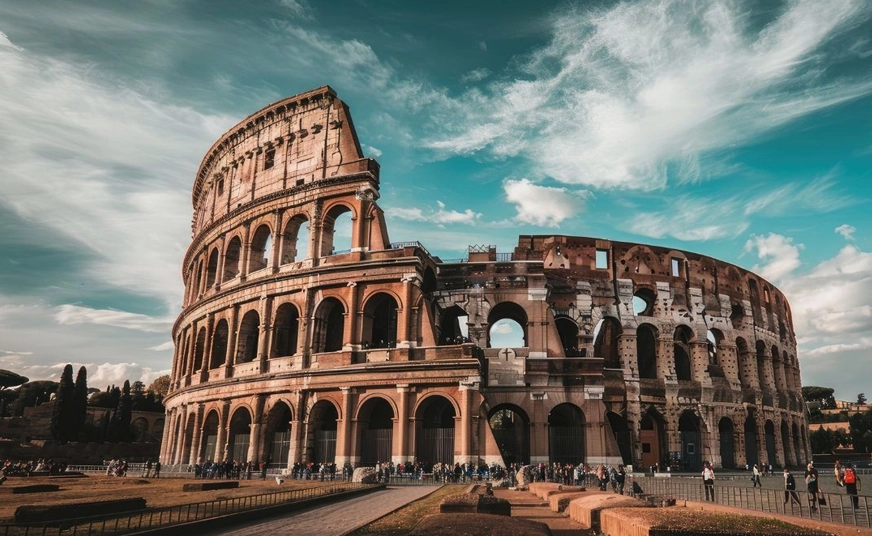
9 - Naples, Capri, and the Amalfi Coast
Campania, where the midday sun warms the land and the hearts of its people, loudly proclaims the name of its capital: Naples. This city stretches between the Tyrrhenian Sea and Mount Vesuvius, and although it is one of the most populous metropolitan areas in southern Italy, it manages to maintain its unique character, centuries-old traditions, and a playful attitude toward life. A taste of pizza followed by a delicious rum baba or a warm sfogliatella pastry are essential to fully immerse yourself in Neapolitan tradition.
Among Italy’s scenic beauties, Capri and the Amalfi Coast certainly deserve special mention. Amalfi, Positano, Ravello, Sorrento, and Capri are famous worldwide for their breathtaking views. A vertical landscape with winding staircases and picturesque alleys, a succession of promontories and coves, pebble beaches and rocks upon which stand the famous watchtowers that once protected locals from Saracen attacks.
xAll the towns of the Amalfi Coast are connected by a panoramic road, full of curves, nestled between the rocky cliffs and the steep sea, considered one of the most beautiful in Italy because it offers a stunning view at every turn. A land filled with the intoxicating scents of orange blossoms and lemons, and the bright colors of the tiled domes and bougainvilleas. And there’s also the archaeology of Pompeii, which has remained almost intact since the devastating eruption of Mount Vesuvius in 79 A.D.xx
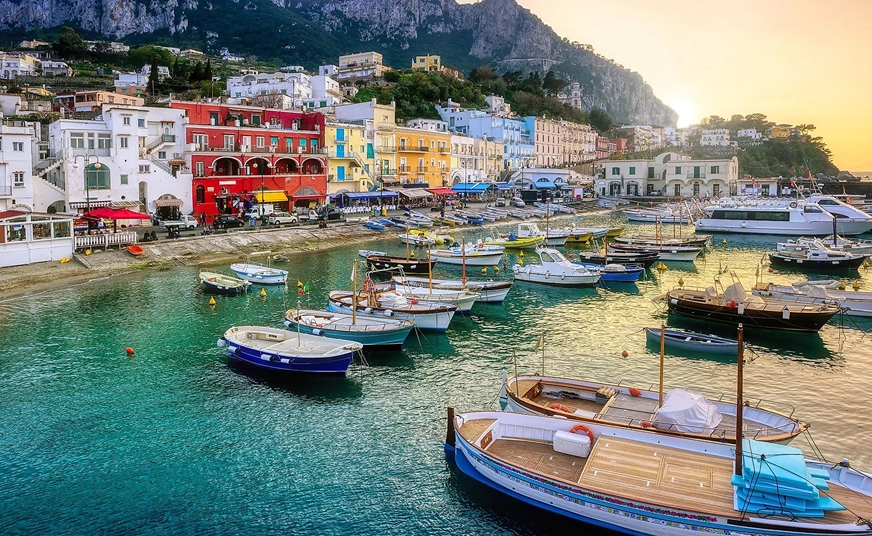
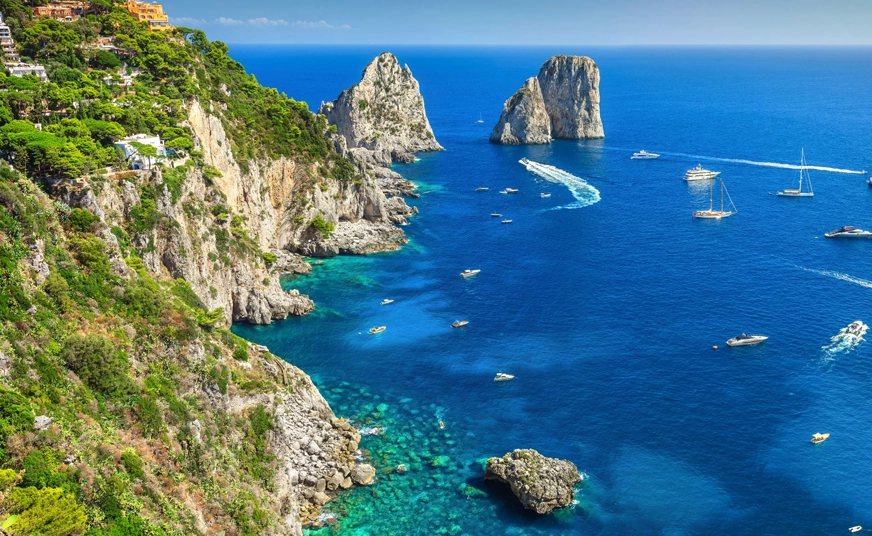
10 - Apulia: Art, Culture, and Enchanting Landscapes
Apulia represents a perfect mix of relaxation, history, nature, and great food. It is an ideal destination for those seeking authenticity and beauty, with a favorable climate almost year-round.
Located in the "heel" of the Italian boot, Apulia is an extraordinarily charming region with many attractions for tourists, thanks to its combination of natural beauty, cultural traditions, and renowned cuisine.
Apulia is famous for its long and varied coastlines, washed by two seas: the Adriatic and the Ionian. Some of the most famous beaches include Pescoluse and Torre dell'Orso in Salento, with white sand and crystal-clear waters, and Vieste and Peschici in Gargano, known for their wild bays.
Among the charming villages and historic cities, we highlight: Alberobello, a UNESCO World Heritage site thanks to its unique trulli, stone buildings found nowhere else in the world. Ostuni, the "White City," with its lime-washed houses that shine in the sun.Lecce, known as the "Florence of the South," famous for its Lecce Baroque architecture. Polignano a Mare, perched on a cliff above the sea, is one of the most photographed places in Apulia.
Don't miss a visit to the Gargano National Park, with forests, lakes (Lesina and Varano), and the mystical Sanctuary of Monte Sant'Angelo. The Valley of Itria, with its expanses of olive trees, dry stone walls, and the famous trulli, creates an idyllic landscape. Lastly, the Castellana Caves, an underground cave complex of extraordinary beauty, is also a must-see.
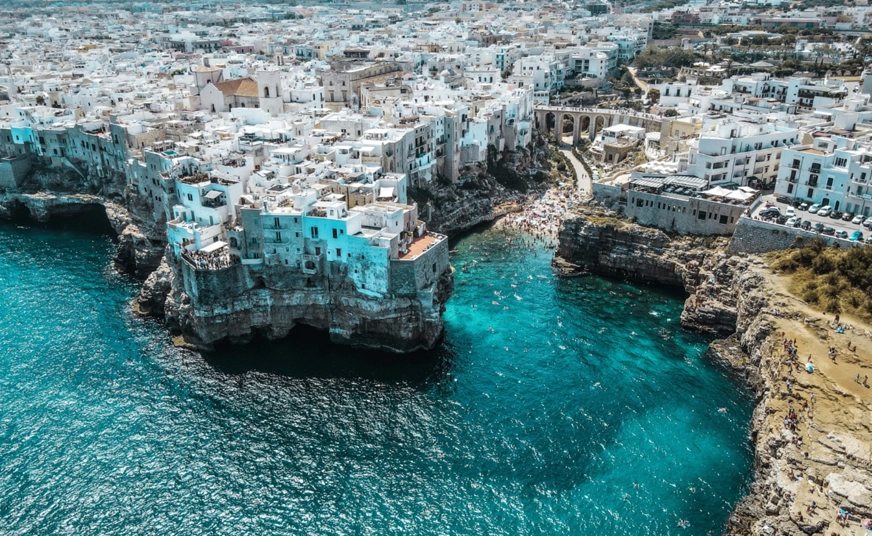
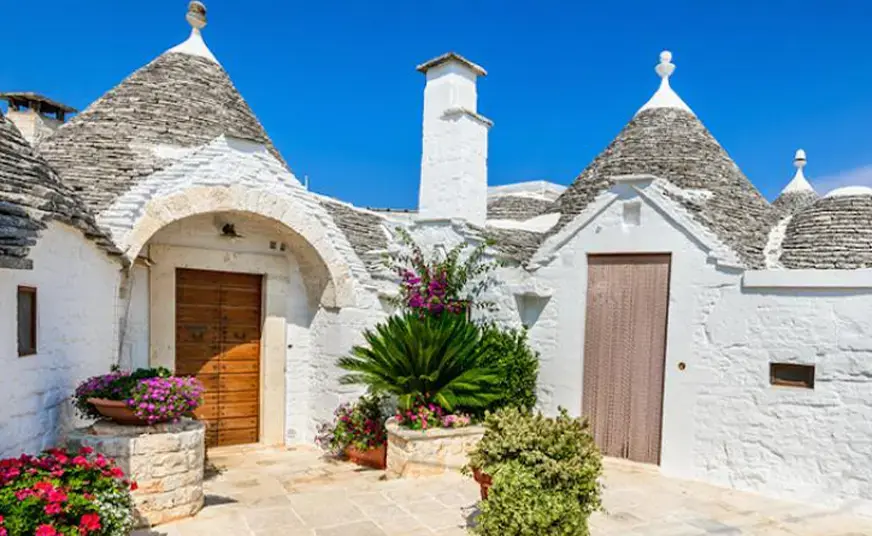
Looking for a bespoke travel experience in Italy? Contact us today and let our team of experts craft the perfect journey tailored to your desires.
Sport & Travel

